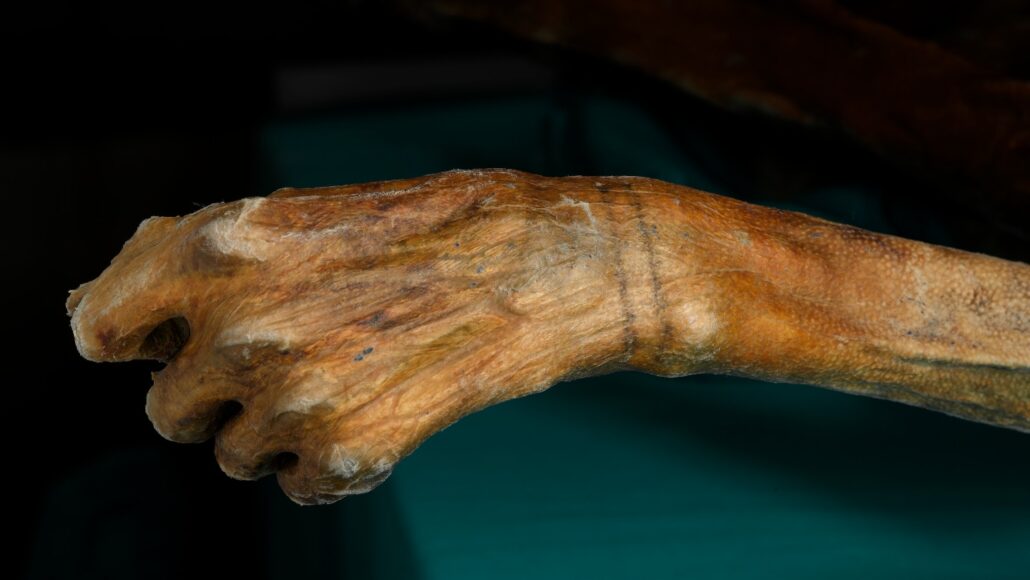Questions for ‘A tattoo experiment hints at how Ötzi the Iceman got his ink’

Here, you can see tattooed lines on Ötzi the Iceman’s left wrist. These tattoos and others on his body could have been created by poking holes in the skin with a pigment-coated tool.
South Tyrol Museum of Archaeology, M. Samadelli/Eurac, G. Staschitz